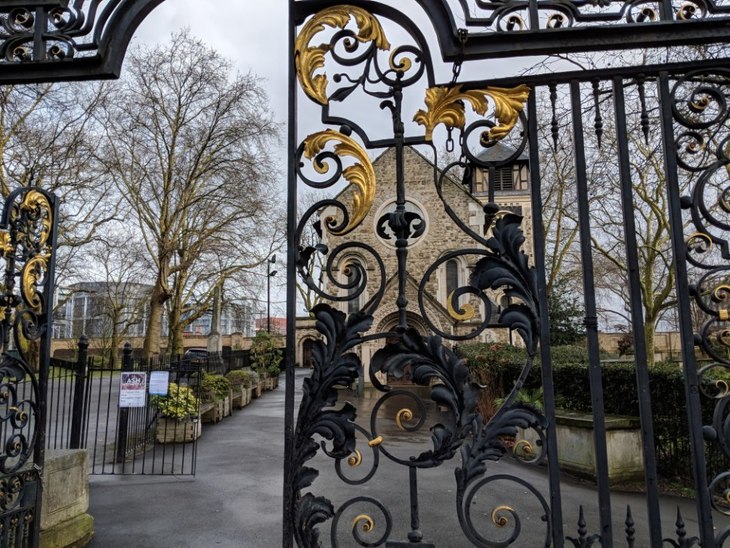
The impressive St Pancras Renaissance London Hotel towers over what is undeniably the capital's most impressive railway station, St Pancras. The decision to upgrade the station was made at the turn of the millennium as part of the Channel Tunnel Rail Link upgrades. Substantial excavation work was planned in order to accommodate the substantially larger Eurostar trains. With its centuries' worth of history, coming across interesting objects is a routine occurrence for London-based diggers, yet nothing could prepare the workers for the oddity in store for them under the Cathedral of the Railways.
The archaeologists tasked with the excavation were aware that they were digging in the graveyard of St Pancras Old Church, a mass burial site in the early 19th century due to the waves of typhoid, cholera and smallpox epidemics that had plagued London. As a result, the 1,500 human bodies encountered were hardly a surprise. But you can forgive Phil Emery and his team for being taken aback when they unearthed four-metre long walrus bones buried alongside human remains in a coffin. And the bones didn't come from just any bog standard walrus, either, but the Pacific Walrus. This now-endangered Bering Sea native boasts elephant-like tusks and has the appearance of a supersized seal. These things weigh up to two tons.

"They did find a reference to Prince Albert riding a giant tortoise..."
The team investigated further, contacting the London Zoological Society to see if there was any research done on walruses around that time to create a link. No luck. The team did find a reference to Prince Albert riding a giant tortoise, but that was the closest they got, and there was no denying that the bones in question belonged to the Pacific Walrus. There had been previous records of whale and ostrich remains found in the capital, but nothing quite on the same scale. Unsurprisingly, there was no shortage of theories speculating how our blubbery friend found its way to a Victorian graveyard.
The main suspects in question are the two walruses that were housed at London's Zoological Gardens in the mid-19th century. The first walrus, which was admitted in 1853, is believed to have been dissected by the anatomists there, conveniently located a stone's throw away from the St Pancras Old Church. The anatomical work took place in the midst of the golden age of anatomical dissection (of both humans and animals), as the dissection of human bodies for medical purposes was legalised in 1832.

"Another possible explanation: body-snatching"
The second walrus, which arrived in 1867, was caught in the Labrador Sea and survived a treacherous three month journey. Christened 'Jemmy', it became a leading attraction for the Victorian crowds in its Regent's Park home, the one down the road from St Pancras. Jemmy was a shy creature and kept interactions with the public to a minimum, occasionally answering to its name and devouring its favourite snack, de-shelled whelks and mussels bought fresh from Billingsgate Market.
Another possible explanation for the mystery walrus: body-snatching. The gory phenomenon ravaged the UK before the legalisation of human bodies dissection in 1832. The high demand of budding surgeons had not been met by the under-supply of bodies (particularly in the case of walruses), which had led to a nationwide epidemic, with London and Edinburgh being particular hotspots. The coffin full of the remains of eight humans and one walrus could have been a way of dumping multiple bodies that had been snatched, including that of the walrus, which is said to have been the bounty of an Arctic whaling vessel.

"The body of the mysterious walrus is on display to the public"
Other rumours that have been mentioned in passing are that the fine-tusked mammal was lugged over as part of the booming ivory trade (although taking the whole carcass over would seem a touch cumbersome). Alas, you must decide for yourself which of these theories is most compelling: barring dramatic developments, the origins of the walrus bones will forever remain a mystery.
There is some consolation. The body of the mysterious walrus is on display to the public at the London Archaeological Archive and Research Centre in Hackney. And if ogling walrus bones doesn't satisfy your walrus fix in the same way as seeing one in the blubbery flesh, head down to the Horniman Museum and marvel at the grandeur of the museum centrepiece, which has been wowing British crowds since 1886.



